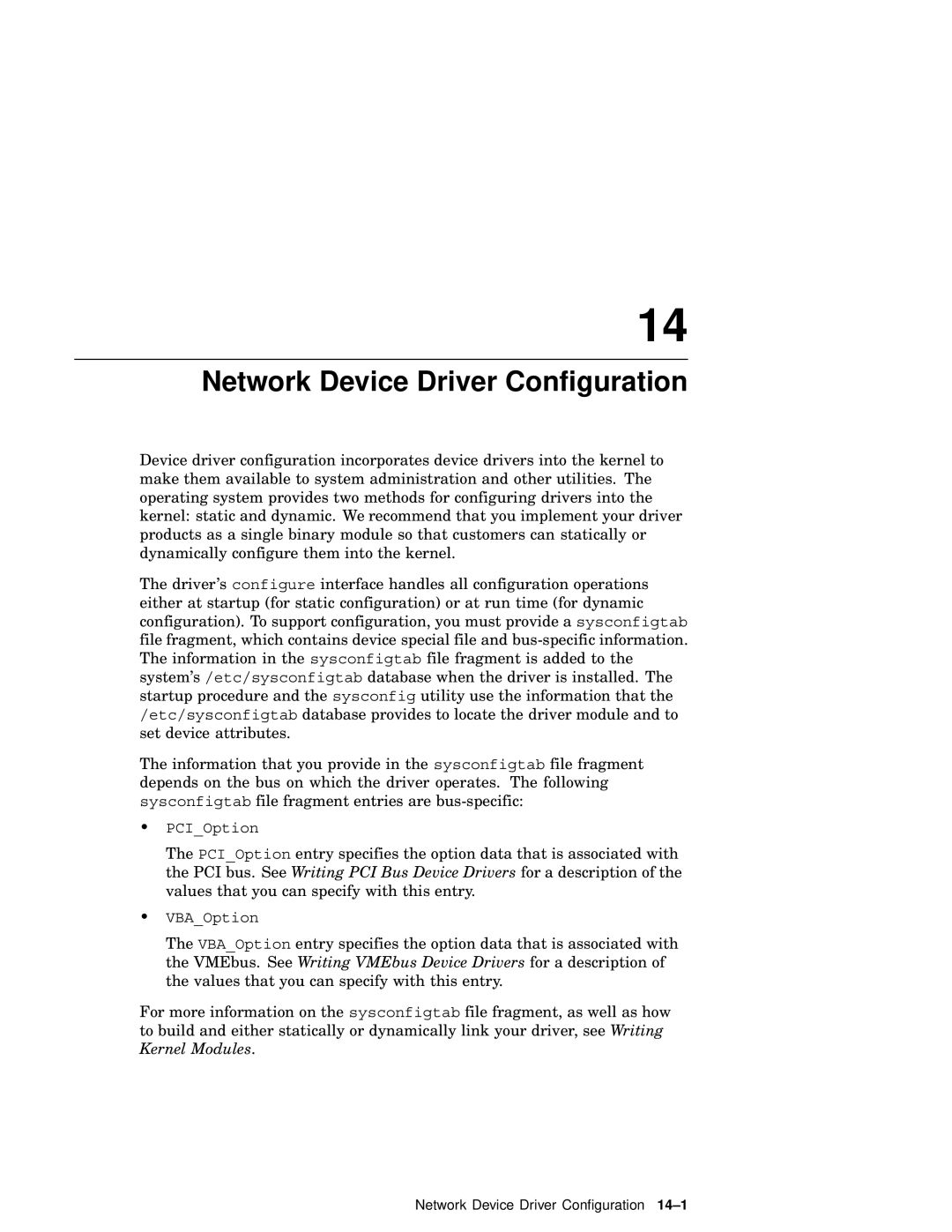14
Network Device Driver Configuration
Device driver configuration incorporates device drivers into the kernel to make them available to system administration and other utilities. The operating system provides two methods for configuring drivers into the kernel: static and dynamic. We recommend that you implement your driver products as a single binary module so that customers can statically or dynamically configure them into the kernel.
The driver’s configure interface handles all configuration operations either at startup (for static configuration) or at run time (for dynamic configuration). To support configuration, you must provide a sysconfigtab file fragment, which contains device special file and
The information that you provide in the sysconfigtab file fragment depends on the bus on which the driver operates. The following sysconfigtab file fragment entries are
•PCI_Option
The PCI_Option entry specifies the option data that is associated with the PCI bus. See Writing PCI Bus Device Drivers for a description of the values that you can specify with this entry.
•VBA_Option
The VBA_Option entry specifies the option data that is associated with the VMEbus. See Writing VMEbus Device Drivers for a description of the values that you can specify with this entry.
For more information on the sysconfigtab file fragment, as well as how to build and either statically or dynamically link your driver, see Writing Kernel Modules.
Network Device Driver Configuration
